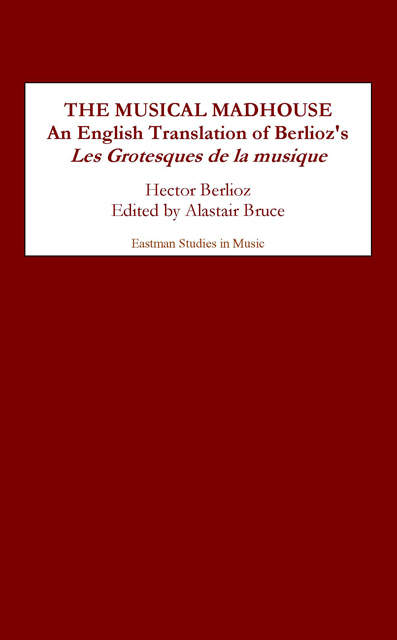The right to play a symphony in the wrong key
Published online by Cambridge University Press: 21 March 2023
Summary
At the time when I was just beginning to glimpse the power of our great but ill-treated art, after eight or ten years of study, a student I knew was asked by the members of an amateur Philharmonic Society, recently established in the Prado building, to invite me to conduct them. I had by then conducted only one musical performance, that of my first Mass in the church of St.-Eustache. I was extremely wary of these amateurs: their orchestra was bound to be frightful, and so it proved. All the same, the idea of getting some practice directing instrumental forces by trying it out like this with very little to lose made up my mind, and I accepted.
Rehearsal day arrived, and I presented myself at the Prado, where I found about sixty players tuning up with that grating noise peculiar to amateur orchestras. What were we to play? A symphony in D by Gyrowetz. I don’t suppose any boilermaker or rabbit-skin dealer or Roman grocer or Neapolitan barber ever dreamed of such platitudes. But I resigned myself, and we began. I heard an appalling discord from the clarinets. I stopped the orchestra and addressed the clarinettists:
“You’ve obviously got your pieces mixed up, gentlemen; we’re playing in D and you were in F!”
“No, Monsieur, we definitely have the correct symphony!”
“All right, let’s begin again.”
Again the discord, again we stop.
“That can’t be right; pass me your part.”
The clarinet part was handed to me.
“Ah! That explains the racket. Your part is written in F all right, but for clarinets in A, so your written F actually sounds D. You have the wrong instruments.”
“But, Monsieur, we only have clarinets in C.”
“Very well then, transpose down a third.”
“We don’t know how to transpose.”
“In that case, for heaven’s sake, keep quiet!”
“Not on your life! We’re members of the Society, and we’ve as much right to play as all the others.”
At these incredible words I dropped my baton and fled as if possessed by the devil, and never heard another word from those “philharmonists”.
- Type
- Chapter
- Information
- The Musical MadhouseAn English Translation of Berlioz's <i>Les Grotesques de la musique</i>, pp. 11Publisher: Boydell & BrewerPrint publication year: 2003

